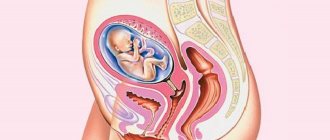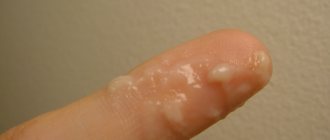Almost all of us know how to get sexual pleasure. Many people love it and would like to experience it again and again. But not everyone can feel a real orgasm. The difference between these two concepts is that we get pleasure from sex on an emotional level, and orgasm on a physiological level. That is why it is not difficult to understand what is what.
Orgasm is divided into several types: genital, breast and whole body orgasm. At the same time, genital orgasm is the most common among its kind. And although such an orgasm does not last long, nevertheless, the sensations after it leave a significant mark on your subconscious. In turn, genital orgasm is divided into three more subtypes: vaginal, clitoral and uterine, they are all interconnected, so we will consider all three.
Vaginal orgasm
The methods of arousal for experiencing this orgasm are associated with the muscle that is located in the lower part of the vagina. But an undeveloped muscle, which is typical for most women, negates the possibility of such an orgasm. Therefore, only a few can experience a vaginal orgasm. In order to become aroused, it is necessary to synchronize the contraction of the vagina and the lifting of the pelvis.
Clitoral orgasm
Clitoral orgasm occurs due to stimulation of the clitoris. In most cases, it is experienced by girls who masturbate. To do this, after they are left alone, they turn on a film containing scenes of a pornographic nature, and, being in a completely relaxed state, stimulate their clitoris. It is not so easy to get such an orgasm with a partner, since relaxation plays the most significant role, but with a man it is very difficult to be in such a state.
Uterine orgasm
For some reason, arousal of the uterus is not considered by doctors as thoroughly as other types of orgasm. However, many women experience it, so it is worth giving it the right to life. Strong arousal occurs as a result of the penis irritating the cervix, causing it to contract. But this is not always possible due to the fact that not every man has a penis that can reach the cervix, or it happens that during sexual intercourse it simply passes without even touching it.
In order to prevent this from happening and the stimulation of the uterus still causes a storm of emotions in you, you need to know a few secrets. The first and very simple way is to simply change your position. The pose will especially help when you lie on your back, the man is on top of you, and at the same time your legs are pulled up to your stomach. Another position that allows you to feel the excitement of the uterus is when a man, lying on his back, holds a woman sitting on him with her legs tucked in by the waist.
Another reason why it is impossible to experience a uterine orgasm is that the uterus is not positioned correctly in your body. But that’s not scary either. To keep the uterus in place, you need to change your position again. This time it is best for the woman to lie on her stomach or side.
During pregnancy
There are many myths associated with sex life while pregnant. If the process proceeds without complications, then there is no ban on intimate life. Pleasure and excitement during pregnancy have a beneficial effect on both mother and child:
- increased blood flow saturates the placenta with oxygen, which eliminates hypoxia and related complications;
- the release of endorphins has a positive effect on both the mother’s mood and the baby’s condition;
- Contractions of the uterus during orgasm, as well as the muscles of the vagina, are a natural process that does not interfere with the smooth course of pregnancy.
Immediately after intercourse, the child’s active movements are noted - there is nothing dangerous in this, this is how he reacts to hormones and oxygen saturation.
Threat
The threat of miscarriage, exacerbation of certain chronic diseases during pregnancy, and abnormalities in organ development can become a temporary ban on sexual activity. The release of oxytocin, contractions and active frictions can trigger labor, so up to 38-40 weeks this can be dangerous for the baby.
Awakening
The anatomy of an orgasm actually starts with a buildup—as most women can attest, an orgasm is a full-body experience, often involving more than one erogenous zone (though most of the time, clitoral stimulation is key). For most women, it takes an average of 20 minutes to orgasm. Meanwhile, your body is going through changes that increase sensitivity and arousal and prepare your body for the big O. Some of these changes are visible, but others are internal and can only be felt.
That warm, tingling sensation you start to feel when you get aroused is associated with an increase in your heart rate and blood pressure, and most (but not all!) of this blood is directed towards your genitals. The clitoris, which is made up of more than 8,000 individual nerve endings, swells and expands. As you approach climax, your clitoris will be pulled up under the clitoral hood (the sheath of skin that protects your clitoris). Your inner labia also begin to swell and your outer lips become separated—this is often accompanied by a darkening of color as more blood fills the tissue.
While it's true that 90% of women can't orgasm from intercourse alone, there are ways to increase arousal and bring you closer to the edge. Try a slow, sensual, full body massage while you undress. Or try a couples massager, which is a vibrator used by a woman during sex that rubs against the clitoris and g-spot while your partner moves in. This creates intense sensations for both of you and leaves your hands free. Or try both, one after the other. It will take you to figure out what you like, so enjoy the search.
Your vagina begins to secrete fluid to lubricate itself to make sex more comfortable—often the more aroused you become, the “wetter” you become. However, this is not always enough - and that's okay! This happens to many women for various reasons. Just be sure to keep your women's moisturizer on hand. Along with this lubrication, the lower part of the vagina becomes narrower and the upper part lengthens as your cervix and uterus move upward slightly, creating more room for your partner's penis.
uterine stimulation
The topic of conceiving offspring is a very current topic, despite the loss of interest of many young people in starting a family and having children. However, many women and men want to have children. It’s good if biological age allows you to conceive offspring without problems and obstacles, but many people postpone the process of conception for a long period, believing that even after 35 years nature will condescendingly give them the child they want. Alas, Nature has its own laws and periods of the best, optimal conception of children. I talk about this in the article “Secrets of Conception and Early Pregnancy”, which is included in two books - “Preparing for Pregnancy” and “Desktop Guide for Pregnant Women”.
I often receive letters from women asking me to recommend some miraculous way to quickly conceive a child, because many of them, after 2-3 months of unsuccessful attempts to get pregnant, begin to suffer from childbearing fever and allow illiterate but commercially minded doctors to interfere with the female reproductive system without any there is a serious justification for this. While working on a new book, which is devoted to the issues of human sexual relations and which is almost completed, I devoted an entire section of this work to the topic of conceiving offspring. Studying thousands of scientific publications devoted to issues of intimate relationships, I was interested in the topic of the significance of sex (sexual acts) in the reproduction of offspring. The information that will be presented next is the result of my analysis of numerous data, and in such a generalized form does not exist either in English-language scientific and popular science publications, or in Russian-language articles and books. This information is in addition to the article on the secrets of conception. It is most often not mentioned by most doctors, and most likely because it is unknown to most doctors.
So, it is important for all couples planning a pregnancy to understand that a person reproduces sexually, therefore the main function of sexual relations is the reproduction of offspring. However, it is important to understand that the same nature has endowed the human genital organs, especially its external organs, with a large number of “devices” for attracting the opposite sex, preparing the body for copulation and successfully conceiving a child. The external genitalia have a huge number of nerve endings (much more than the vagina, cervix and uterus), which are involved in sexual arousal and orgasm, as well as a large number of different glands that play a role in the production of secretions necessary for sexual intercourse to be most effective , without negative consequences for men and women. You can read more about this in my new book.
Since nature has endowed humans with all sorts of “devices” for successful conception through sexual intercourse, it is important to understand that sexual intercourse cannot be torture, but must bring sexual pleasure and sexual satisfaction, because arousal and orgasm are necessary for conceiving children. In men, sexual arousal is accompanied by erection and potency, and orgasm is nothing more than the ejaculation of sperm into the vagina. And no one will dispute this, right? So why do many women, as well as men, remain silent about the role of female sexual arousal and orgasm in conceiving children? Because they don’t know anything about this issue, and the statement that “women get pregnant without any orgasm” leads to a very false idea that arousal and orgasm have nothing to do with conceiving children. Is it so? Let's take a closer look at the processes that a woman undergoes with and without arousal, and what is the role of these processes in relation to sexual intercourse and a man's sperm. I have placed the data in a table that will help you see the difference in the processes occurring in the female body.
| Indicators | Without sexual arousal | With sexual arousal and orgasm |
| Vagina sizes | Don't change | Are increasing |
| Vaginal wall thickness | Does not change | Thinner |
| Humidification (lubrication) | Weak | good |
| Feelings during sexual intercourse | Discomfort, soreness, burning due to friction | Mildly pleasant to extremely pleasant |
| Posterior vaginal vault | Not expressed | Increases in size |
| Acidity of the vaginal environment | Does not change (high) | Decreases |
| Distribution of sperm after ejaculation | All over the vagina | Accumulates in the posterior vaginal fornix |
| Sperm activation process | Violated | Positive |
| Sperm survival | Bad | good |
| Sperm motility | Bad | good |
| Cervical canal | Closed | Expands and opens slightly |
| Cervical mucus | Poor sperm passage | Good sperm permeability |
| The rate of entry of the first sperm into the uterine cavity | Up to 30 minutes | 1-2 minutes |
| Contractions of the muscles of the uterus and fallopian tubes | Weak | Good - help the sperm move towards the egg |
| Probability of conception (on the day of ovulation) | Low | High |
| Sexual pleasure and satisfaction | Minimum | Maximum |
By looking closely at this data, you can see the difference between the processes that occur with and without sexual arousal.
Now a few clarifications on some important points presented in the table. So, let's consider the issue of changing the size of the vagina during arousal. Why is this happening? In a non-excited (relaxed) state, the vaginal size is 7-9 cm in 78.34% of women. In an excited state, the size of the vagina increases to 13-19 cm, and in 86.96% of women it is 15-16 cm. Now let’s compare them with the size of the male penis: 95% of all men have a penis 10.7-19.1 cm long in a state of excitement, and the average length is 13-15 cm. The size of the penis in a relaxed state in adult men is about 9 cm. But, as thinking people, you understand that in a non-excited state, sexual intercourse is impossible for a man, so let’s compare the size of the excited penis with the size of the vagina, where this very penis is inserted. Have you noticed that the size of the erect vagina is almost the same as the erect penis? If so, then think about it: how much pleasure does a woman get when her vagina is not aroused, and a man tries to insert his erect penis into it? Is it easy to insert a 13-15 cm “object” into a 7-9 cm physical “object”? This is probably tantamount to torture. Therefore, it is not surprising that many women shy away from sexual relations with men, because many do not know how to get aroused themselves (and are even afraid and do not want to), and their partners also do not know how to arouse their women. Thus, in nature, sexual arousal is an important stage in the preparation of male and female organisms for sexual intercourse . What else is important to mention? That during arousal, not only the size of the vagina increases, but the walls of the vagina become thinner. This process in English is called ballooning. Balloon is a balloon, so, figuratively speaking, the vagina is “inflated.” For what? Since the vaginal wall becomes thinner, and the blood flow in the vessels surrounding the vagina increases, most of the blood plasma passes through the vaginal wall - hydration (lubrication) increases, which will not only protect the vaginal wall from friction with the penis, and therefore its damage, but also will reduce the acidity of vaginal contents. Sperm is a foreign body for any woman, so the vaginal environment reacts to it very aggressively. That is why the ejaculate contains tens and hundreds of millions of sperm - most of them die in a matter of seconds and minutes after ejaculation. In an excited state, more potassium and sodium ions, as well as chloride, appear in the vaginal secretions, which makes these secretions more alkaline and more “friendly” towards sperm.
These are not all the secrets of female arousal. Another process occurs - tenting. Tent is a tent, but in this case we are talking about increasing the size of the posterior vaginal vault, which is located behind the cervix. Its size increases and it becomes a kind of “tent” for the cervix, as well as a kind of reservoir (pool) for ejaculated sperm. In many publications you will find the statement that the cervix plunges into this “pool” of sperm and begins, contracting, to suck in sperm like a pump. This is not an entirely accurate description of the process occurring in a woman’s body after sexual intercourse, because this “pool” occurs only when a woman is sexually aroused, and good contractions of the cervix and uterus are expressed only during orgasm. Outside of arousal, sperm is “distributed” throughout the vagina and quite often flows out of it, causing women to complain about the discharge of an unpleasant-smelling, “strange” liquid. It was mistakenly believed that during sexual intercourse, sperm is released directly into the cervical canal. No, sperm first accumulates in the posterior vaginal fornix. Why? It is important to note that the ejaculate that is sprayed into the vagina is not uniform, but has certain stages of formation. The first to be released is a fluid that is produced by small glands inside the urethra of the head of the penis (Littre glands), then the secretion is released from the Cooper glands, after which the testicular fluid containing sperm is released, as well as the secretion of the epididymis (epididymal fluid), which also contains sperm, along with the fluid of the seminal vesicles and prostate. Thus, during ejaculation, there is a certain order in which the different components of semen are released, so a period of time is required for the semen to become homogeneous. This also means that there are no sperm in the first, initial portions of the ejaculate. To acquire fertilizing properties, sperm must undergo a series of step-by-step changes. First, already in the vaginal cavity, sperm undergo capacitation, which continues in the uterine cavity and in the fallopian tubes. Capacitation is the acquisition of properties by sperm that will allow them to fertilize an egg: sperm become more mobile, take on a more spherical shape, their membrane loses a number of substances that prevent the union of sperm with the egg.
So, after sexual intercourse, the bulk of sperm accumulates in the posterior fornix of the vagina, which, due to its stretching and increase in size, becomes a kind of saccular reservoir for sperm. It is here that all the ingredients of the semen are mixed evenly, in a matter of minutes the semen is liquefied under the influence of enzymes and acquires a gelatin-like structure, essentially concentrating the sperm together, preventing them from being “lost” in the vagina. At the same time, enzymes from the prostate juice begin the reverse process - the process of sperm liquefaction or decoagulation. This process also takes a few minutes, but most often no more than 15 minutes. Reproductive technology specialists believe that if sperm liquefaction lasts more than 15 minutes, such sperm loses its fertilizing properties.
Now let's discuss the issue of uterine contractions during orgasm and their role in the process of conception. The muscular wall of the uterus (myometrium) consists of three layers of muscle. The first layer is called the archmyometrium (stratumsubvasculare) and it consists of smooth muscles arranged in a circle (circular muscles). The second (stratumvasculare) are bundles of short muscles. The third layer (stratum supravascular) contains long muscle fibers. Only the inner third of the uterine muscles (archyometrium) is involved in uterine contractions. This layer of muscle starts from the cervix and then continues to the fallopian tubes. The contractions of these muscles resemble intestinal peristalsis, which also occurs due to the gradual contraction of smooth circular muscles. This contraction allows sperm to move faster from bottom to top, i.e. from the cervix to the fallopian tubes.
Another interesting mechanism for sperm movement is related to the fact that sperm most often moves towards the fallopian tube that is connected to the ovulating ovary, that is, purposefully. The ovulating ovary produces more hormones, especially estrogens, due to the growth of the dominant follicle and the release of fluid from it upon rupture (ovulation) into the abdominal cavity, where this fluid enters the infundibulum of the fallopian tube. Seminal fluid contains prostaglandins, but some of them enhance contractions of smooth muscles, while others, on the contrary, relax them. The significance of these prostaglandins has not yet been studied. Thus, uterine contractions during orgasm help propel sperm into the uterine cavity. It is important to mention here the fact that only healthy sperm enter the uterine cavity, therefore, if a man has abnormalities in the quality and quantity of sperm, he may not conceive a child for years or never at all. Illiterate doctors usually “dig” into women because it is easier to deceive them, it is easier to manipulate them, saying that one sperm is enough to conceive. How many sperm are needed for successful conception? It turns out that in the entire ejaculate of a healthy man (and therefore healthy sperm), only 10% of sperm are activated through capacitation, which allows them to acquire fertilizing qualities - the remaining sperm do not have fertilizing activity! Does this mean the more sperm the better? No, it is excess sperm that becomes harmful to the female reproductive system and can interfere with conception and implantation of the fertilized egg. When artificial insemination is performed and sperm is introduced into the uterine cavity, the amount of sperm must be strictly controlled to prevent it from damaging the egg. This is due to the fact that sperm die inside the female genital organs (vagina, cervix, uterine cavity, fallopian tubes) in large numbers. In this case, enzymes (enzymes) are released that destroy the wall of the egg. On the one hand, such destruction is necessary for the entry of the sperm. On the other hand, too many dead sperm leads to a serious violation of the integrity of the female reproductive cell and defective conception (quite often an empty fertilized egg). Such aggressiveness of sperm is often observed with polyspermy (the presence of a large number of sperm in the ejaculate) or with several frequent sexual intercourse with ejaculation in the vagina (too frequent sexual intercourse most often does not lead to the conception of children). There is another interesting mechanism present in nature when conceiving a child, and it is associated with the mucus of the cervical canal. Many people, including doctors, think that sperm passes from the vagina through the cervical canal into the uterine cavity unchanged, that is, in the integrity in which it is in the vagina after ejaculation. However, semen samples taken from cervical mucus show that the mucus does not allow dead, immotile or inactive sperm, vaginal epithelial cells, and male urethral epithelial cells to pass through. According to a number of scientists, cervical mucus acts as a filter, “absorbing” only healthy and motile sperm. Therefore, the concentration of sperm in the cervix is much lower than their concentration in the vagina. And since immediately after ejaculation the mobility of sperm is low, it is not yet possible to explain their presence in the cavity of the fallopian tubes 1-5 minutes after ejaculation by their rapid mobility or the “filtering” ability of cervical mucus. Obviously, there is another mechanism for the rapid transport of sperm, and it is possible that this mechanism involves peristaltic muscle contractions of the uterus, which can also arise as a result of chemical reactions of the interaction of sperm with the surface of the vaginal and cervical mucosa, as well as under the influence of mechanical stimuli (genital member), and during orgasm.
So, you already know a lot about the secrets of conception. All that remains is to answer the question: when is the most optimal time for orgasm to occur for conception ? It is known that orgasm in women can occur before ejaculation, during ejaculation and after ejaculation of seminal fluid. If orgasm occurs before ejaculation, then uterine contractions do not take much part in the transport of sperm, although the cervical canal expands and opens slightly due to relaxation of the uterine muscles - this does not prevent sperm from entering the uterine cavity. Peristalsis of the uterine muscles is observed, but it is not as pronounced as during orgasm. Most often, a different scenario is observed - most men “cum” before the woman has an orgasm or there is no orgasm at all. If an orgasm occurs simultaneously in a man and a woman, the sperm does not enter the uterine cavity immediately, because, firstly, it is not active, and secondly, during orgasm, due to rhythmic muscle contractions, the cervical canal narrows, and only after a few minutes After orgasm, it relaxes and opens. This time is enough to activate the sperm. Some doctors and scientists consider the most optimal option for conception to be a “delayed” orgasm - first, the man ejaculates into the vagina against the background of the woman’s arousal, and the female orgasm occurs 3-4 minutes after ejaculation. The optimality of this option is explained by the fact that during this time the sperm reaches maximum activation through the process of capacitation, and contractions of the uterus, as well as its subsequent relaxation, can act as a pump, drawing sperm into the uterine cavity and fallopian tubes. There has been little research in this direction, just as no one has explored the importance of sexual positions in conceiving offspring, although logic dictates that given the changes in the vagina, the traditional missionary position (position) will be the most optimal. But one thing is clear - orgasm is important for the process of conceiving offspring. These are not all the secrets of the female and male organisms, including in relation to their role as sexual partners. Many interesting, and most importantly, modern, fresh, new facts on the topic of Feminine and Masculine are given in my book. In conclusion, I will say that do not create a problem where there is none. This advice applies primarily to women who are panicking about their “infertility” and are looking for a panacea in the form of pills, injections, which become blind and deaf puppets in the hands of various crooks, including those in white coats. To begin with, increase your level of knowledge and learn to understand how and under what circumstances the conception of a child occurs, what is necessary for this, what nature has endowed you with and how to use this Gift and not ignore it.
When women complain that their men cheat on them and have affairs, or when men complain that their other half constantly denies them sexual relations (and therefore partially compensate for the lack of sexual relations outside of their marital unions), the problem must be sought in a misunderstanding sexual partners the meaning of sexual arousal and obtaining sexual pleasure through orgasm and other types of sexual activity. It is also important to understand that for both men and women, sexual arousal and orgasm (ejaculation or menopause) are always expressed in the same form: arousal is arousal, orgasm is orgasm. A person cannot be dead in any other way. A woman cannot be pregnant in different ways. So there can be no difference in orgasm. It can be weak or strong, but an orgasm is an orgasm.
I receive quite a few letters in which women almost tear their hair out, considering themselves frigid, because with stimulation of the clitoris they have an orgasm, but they have not experienced a “vaginal” orgasm without stimulation of the clitoris. In my book, I describe in detail how and when myths about the frigidity of women arose, and also consider many other issues. I will repeat one thing: do not create problems where there are none. If you know how to orgasm, be glad that you can do it. If you don’t know how, learn, because 90% of women orgasm without any problems when stimulating the erogenous zones. This is why nature has endowed you with sensitivity. So don’t voluntarily turn yourself into insensitive logs lying passively in bed and waiting for an orgasm like manna from heaven. Enjoy life and be glad that there are men and women in your life who want intimacy with you.
Consultations with Elena Berezovskaya at ClubCom
Big O
When the peak moment finally reaches, your muscle spasms will begin, especially in the pelvic area. It is the combination of the walls of your uterus, vagina, anus and pelvic floor, causing waves of pleasure throughout your belly and the rest of your body. Interestingly, scientists have discovered that the strength of your orgasms may be tied to the health of your pelvic floor muscles. The more toned your pelvic floor muscles are, the better they contract during orgasm, adding to the pleasure you feel. The easiest way to strengthen these muscles is to start doing Kegel exercises, which lift your pelvic floor upward, holding the contraction for a few seconds, then relaxing and repeating. As you train, you progress through progressive levels to achieve instant strength and its sexual benefits!
Depending on the strength of your climax, it can last from a few seconds to a full minute. The number of contractions also varies, but the normal range is from 1 to 12 contractions, each lasting about a second. And don't think sex and orgasm are an entirely body-based experience—your brain gets in on the action, too, releasing chemicals like oxytocin (which helps create intimacy) and dopamine (a natural painkiller).
Remember that every orgasm is different and every woman experiences her orgasms differently. However, better understanding how your body (and mind) responds to sexual arousal can help you unlock your abilities. Take the time, either on your own or with your partner, to figure out what you like and find your own rhythm - we all know that orgasm is great fun!
Symptoms
If you look at what a uterus turned inside out looks like (photos of this pathology are presented on specific resources), you will understand that it is extremely difficult to confuse this condition with any other disorder. Symptoms of uterine inversion will be as follows:
- A blood-red body with a dense consistency is located in the vagina or falls out of it;
- The patient has profuse vaginal bleeding, sometimes biological fluid collects in clots;
- Due to severe blood loss, the woman loses consciousness;
- There are signs of shock, and blood pressure readings are rapidly falling;
- The patient's pulse is threadlike, tachycardia is observed;
- The skin is pale, with signs of cyanosis;
- There is excessive pain in the lower abdomen, sacrum or lower back;
- During palpation, the uterus cannot be felt behind the pubic symphysis.
All these conditions are critical and pose a danger not only to the health, but also to the life of the patient, so she must be taken to a medical facility as quickly as possible, where doctors can provide timely qualified assistance.









